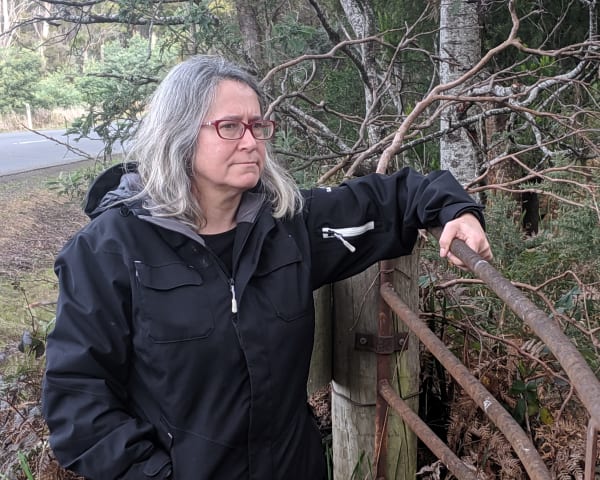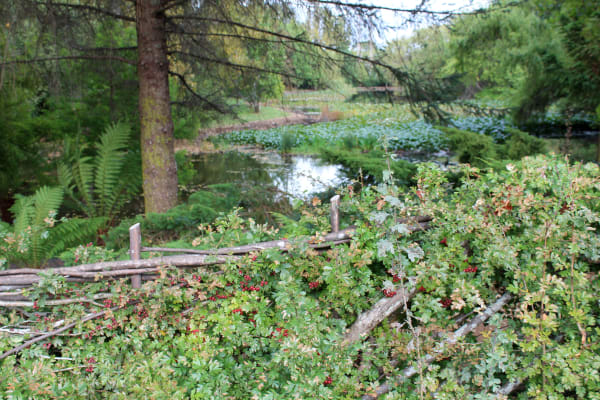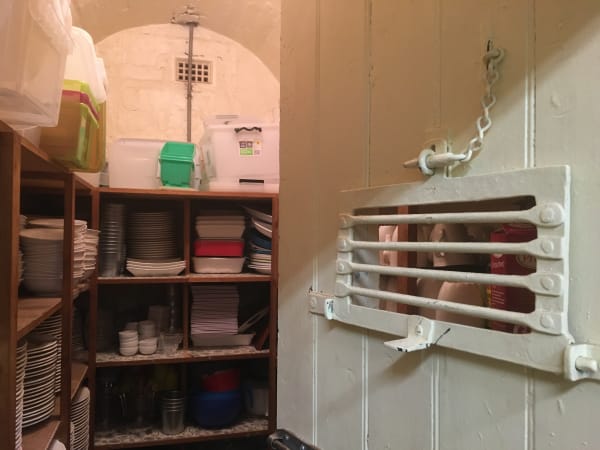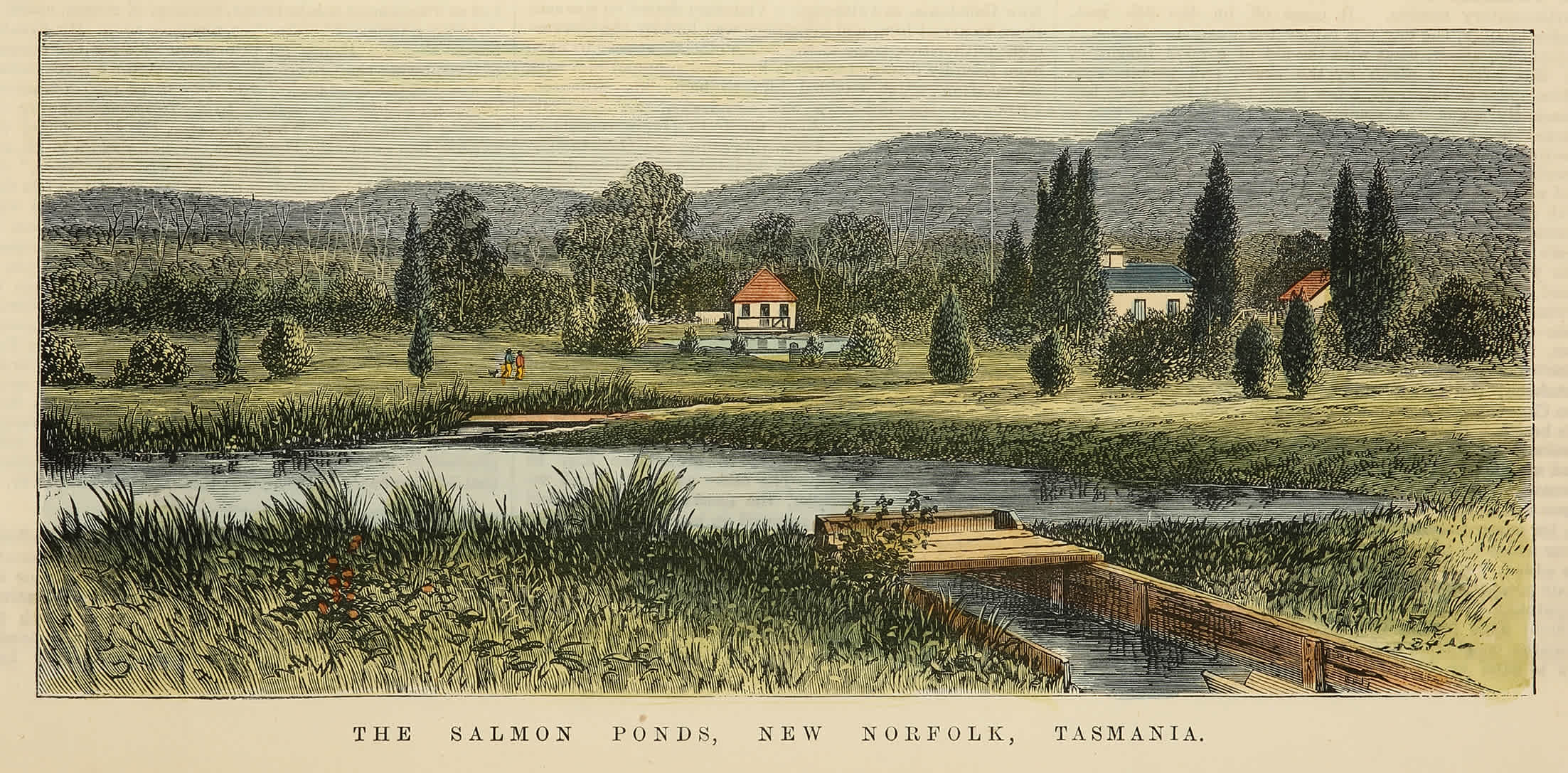CROSSROADS
This column is about a Tasmania in transition: change wrought by new economic circumstance, by uneven demographic shifts, sea-changers and tree-changers, aging populations and the inevitable pull cityward, by the ever-growing circles of homes around ever-wider cities, by the wrenching reversals coming with climate change. Can these Tasmanian places and their people adapt? And should they?
Like opinions about most prisons, those about the $270 million complex proposed for Westbury tend to reflect whether you’re inside looking out, or on the outside looking in. Those on the inside of this town see a charming, cottagey village, as envisaged by its English military planners early in the 19th century, surrounded by farms and businesses that draw from its rich soils and ample water.
This, people remind you, was to be the capital of Tasmania.
For the visitor, too, Westbury is a picture postcard: an oak-studded village green, Georgian architecture and a platypus-populated Meander River. From its carefully laid grid of streets stretch long, hawthorn-lined lanes.
More, as local newspaper editor Liz Douglass notes, Westbury furnishes a real slice of country living, but close proximity to work in Launceston or the ferry in Devonport. It has a single pub, supermarket, RSL and chemist, real estate office and four coffee shops.
Westbury is human scale, walkable and driveable, and some 2,000 Tasmanians call it home.
The outsider, however, sees a different place altogether. That separation begins at the northern edge of town, where neat hedge, lawn and pavement meet the unglamorous world of industrial-scale farming and manufacturing.
Here is a precinct of a half-dozen processing and fabrication plants, the largest – poppy processor Extractas Bioscience (formerly Tasmanian Alkaloids) – surrounded by a 3.5m, barbed wire-topped fence. Village and industry are further divorced by a deep, wide cutting through the landscape – the multi-laned Bass Highway.
In June 2020, the state government announced its proposed 270-prisoner facility would be built five kilometres beyond this point, along two-lane Birralee Road.
Between town and site is largely forest and farmland, but includes Egmont Reserve, a locally favoured swimming hole formed as the Meander River crosses the rural road.
The quarter-billion-dollar prison is among the largest infrastructure projects ever in northern Tasmania. The state government says it will better meet the needs of the state’s prison population that is from the north, and from where families are now required to travel significant distances for visitation.
Certainly, a glance at a map of Tasmania shows Westbury at the very midpoint between the state’s east and west coasts.
Stung by the sharp opposition from locals since announcing Westbury as its preferred prison site, the government stepped up efforts to hear those concerns. In December 2019, Attorney General Elise Archer – and then in January the following year, Premier Peter Gutwein – conducted a series of listening tours in town. The prison site was moved further along Birralee Road.
Challenges to the prison proposal have coalesced around a group calling itself Westbury Residents against the Prison – WRAP – headed by local solicitor Linda Poulton. WRAP has some 140 members.

A prison would change the essential village character of Westbury, Poulton argues. The government’s recent decision to build on a site 5.3km away, 3km beyond its original preference, “does address some concerns” she says. “But again, we feel the decision has been made without consultation. “We forced them to rethink by backing them into a corner. This strengthened our position – WRAP is the only reason for this change being made. Yes, the prison is no longer right on top of us, but we need to see detailed infrastructure, pipeline plans and easements. It’s still not a great process,” she says.
While the government’s decision to move the prison site further away suggests an accommodation of local angst, it also dovetails with an argument posited by local accountant Graeme Sackley.
“This prison proposal is an ideal opportunity for the community to make demands of the state government,” says Sackley, a tax specialist who moved his business to Westbury from Cairns. “You want a prison here? This is what you can do for us to make this acceptable.”
“Let the community find ways to take control of the project,” he offers. “Make a list of those things we need: a full-time police station, for instance. Use of local contractors on the prison, NBN service to every premises, improvements to the town centre … whatever the local people want.”
Others in town cite concerns about personal safety, a difficult subject to broach. “Even with the move further from town, we have concerns,” says retired dentist Dinah Fitzgerald, who owns the historic property Culzean on the edge of town, with husband Philip. “We’ve got no way to put a secure fence around us.”
“How are we supposed to protect ourselves, when we cannot – by law – even carry pepper spray?” asks Philip.
It’s no simple matter to discount the fear that comes with a proposal for a new prison, especially one that comes with the words Maximum Security attached. Some fear Westbury will be labelled a “prison town”, or a place that “attracts the wrong types”.

Listening to those voices is Liz Douglass, editor of the Meander Valley Gazette. The monthly paper has taken a neutral posture. “We try to hear out both sides,” she says, “with a deliberate balance of letters to the editor.”
Much of the pro-prison sentiment has moved to social media. “There’s a good deal of venom and vitriol out there” from those unhappy with the prison proposal, Douglass says. “It feels like it’s been dumped on Westbury.”
Douglass’ point about community divisions are echoed by Glenn Boyd, a farmer in nearby Hagley. “People say, but you live a long way away. I say, where’s the line that says we can or cannot get involved in this debate? There are just a few neighbours around the proposed jail site. Are they the only people allowed to have a say?”
Boyd goes on to ask a much-asked question: “How many Australian towns have a prison close by?” and then answers it for himself. “Many of them!” he says. “Beechworth prison (northeast of Melbourne) is right in the town, and a nice tourist town it is.”
Leigh Watts, who runs an excavator business from his Westbury home, considers the fears about a prison overblown. “When Tas. Alkaloids expanded here (in 1999), people were very negative. We were going to be the heroin capital of Tasmania, remember?
“But we’ve done very well out of that industry, a lot of people have work because of that plant. And that’s my main concern as I look down William Street [Westbury’s main street] and see the places closed. We need to bring business here. A facility on Birralee would do that.
“This prison proposal is the greatest opportunity this town has had in my memory,” Watts says. “The government has gifted this town. And it would be an absolute tragedy to miss out.”
Concerns about property prices are a common subject of discussion. In fact, house values around town have held up strongly for more than a year and those coming on the market now move fast. Listings show 15 Westbury houses were sold in all of 2019, but according to domain.com, 50 homes, business and vacant lots were sold in 2020. A significant number of those recent sales were less than $400,000, an attractive price for Tasmanian real estate.
While local real estate agents are reluctant to weigh in on a sensitive subject, those interviewed say the numbers reflect a hot property market. “Prices are good; the issue is getting places to sell,” said one. “And many of those building the prison or working there will want to live here. It’s all positive for Westbury.”
Meander Valley Council, left early on by the state government to explain the proposal to the community, will have the final say about the prison through the planning process, probably by the end of 2021. In the meantime, much of the mud-slinging, complaints about process and transparency landed on the desk of mayor Wayne Johnston. A prison is a “big, scary thing, something that leads to anxiety in a place like Westbury,” he admits. “But we’ve been honest and respectful, open about the whole process. We are listening.”
Johnston interprets the decision to seek a site further from the town as a reasonable compromise. “The state government has listened,” he says. “We can move forward with a clear direction on the prison.”
Retired restaurateur Peter Wileman remains deeply suspicious about the entire process of community outreach. “It’s about common sense,” he says. “The question is less about whether the prison is near Westbury and more about whether it’s close to essential services and infrastructure like a hospital, courts and police.”
Adds his wife, Doreen, “We are not against a northern prison. We just don’t want it within a few kilometres of our town, our post office. It’s too close.”
At the Westbury RSL, a solid building across the road from the town’s handsome village green, it’s mid-week and the place is humming with customers and meals, drinks and talk.
Some of it, inevitably, is about the prison: the proposal’s pros, the cons of cons.
A subject mostly overlooked is that Westbury already has a prison. It was built 190 years ago, its six arched-roof cells each holding up to twelve prisoners. A 50mm-thick door with steel grate and heavy sidebolt secured a three feet by nine feet (100cm by 300cm) cell. Fully occupied, it would have offered little room or even fresh air. Just outside were both stocks and gallows.

The cells of Westbury prison not only still exist, but along with the original military barrack room, now form the structural core of this very same RSL. The old cells house a large stock of beverages and the crockery needs of its kitchen. And the diners tonight are actually eating in the prisoners’ exercise yard.
The original prison bonds Westbury firmly to its past. The question now is whether a modern prison can take it into the future.
Mike Kerr is a Tasmanian writer and journalist, and occasional comedian and cartoonist. He has lived in the US and Australia, worked in both public and private media sectors, and now writes for multiple platforms including radio.
In truth, though, he favours the stuff that’s on paper. He says, “I come from a school of thought that says newspapers, magazines and books are important. Reading is important, and people who read are important. There’s a covenant, a trust, between those who write and those who read. Of all interactions in media, I value that relationship above all others.”








